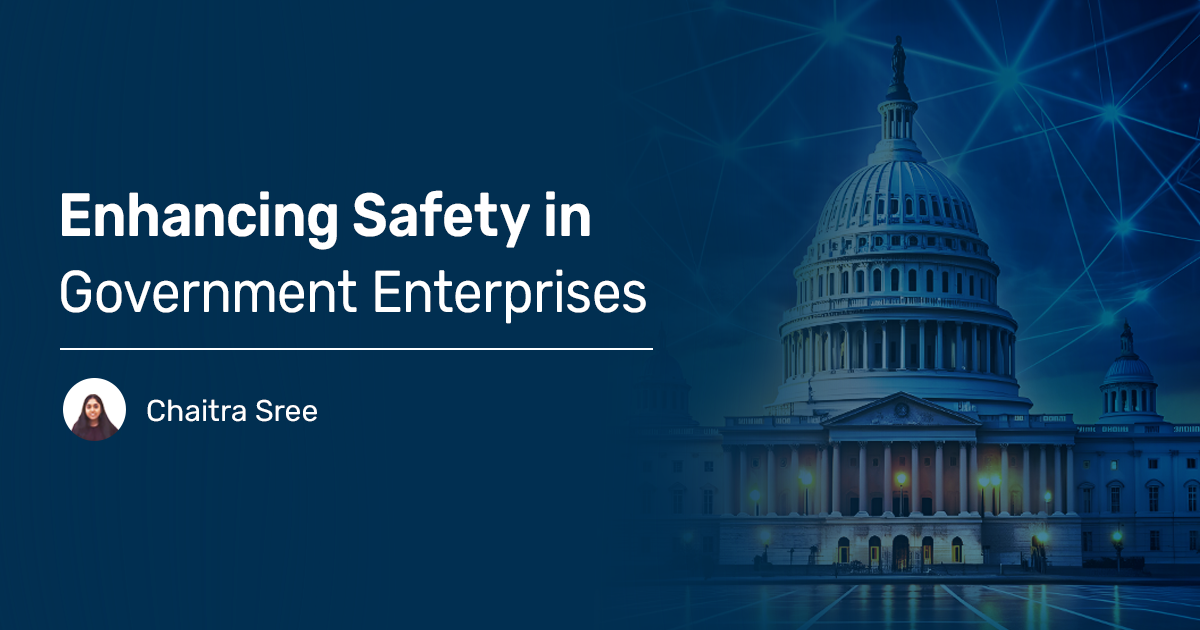As government agencies and public institutions increasingly rely on digital systems to deliver services, manage resources, and store sensitive information, the importance of cybersecurity has never been more pronounced.
Cyber threats—whether from individual hackers, organized cybercriminals, or nation-state actors—pose serious risks to the security, stability, and trust of government institutions. Govt enterprises become the main target due to the amount of sensitive information they hold and the money involved.
In this blog, we’ll explore why cybersecurity is crucial for government enterprises, check out some notable government cybersecurity initiatives, discuss the challenges, and offer best practices for maintaining security in this sector.
Importance of Cybersecurity in Government
In a world where cyberattacks can disrupt critical infrastructure, undermine national security, and compromise sensitive data, governments must prioritize cybersecurity as a matter of national and public interest.
Public institutions often handle a wide range of sensitive information, from citizens’ personal data to state secrets, making them prime targets for cybercriminals. Compromising the government IT network will lead to unauthorized access, loss of data integrity, or even complete shutdowns of essential services like healthcare, utilities, and law enforcement (literally everything).
Moreover, a cyberattack on government enterprises could have a ripple effect across the economy, diminishing public trust and potentially harming relationships between countries if attackers from other countries are involved.
Governments around the world have taken initiatives to safeguard their IT networks. Let’s discuss a few of them.
Government Initiatives for Cybersecurity
Recognizing the gravity of cybersecurity threats, many governments worldwide have launched targeted initiatives to bolster their digital defenses. Here are a few key examples:
1. Cybersecurity Frameworks and Policies: Various countries have established national cybersecurity strategies, such as the National Institute of Standards and Technology (NIST) Cybersecurity Framework in the U.S. These frameworks offer structured guidance for assessing and managing cybersecurity risks within public institutions.
2. Public-Private Partnerships: To strengthen cybersecurity, governments often collaborate with the private sector. These partnerships enable knowledge sharing and ensure that critical information about potential threats and attack vectors is disseminated effectively.
3. Cybersecurity Research and Innovation Funds: Governments fund research into new technologies, threat detection methodologies, and cybersecurity best practices. This support advances the development of innovative tools that can help public institutions defend against emerging threats.
4. Workforce Development Program: Many governments invest in cybersecurity education and training programs to address the shortage of skilled cybersecurity professionals. By creating a knowledgeable workforce, these initiatives ensure that public institutions have access to the expertise needed to tackle complex cyber threats.
The Challenges in Safeguarding Government Enterprises
While governments are making efforts to adopt cybersecurity, they also initiated a few programs, e.g., The Indian Computer Emergency Response Team (CERT-In) is a national agency to address cyber-attacks occurring in govt networks.
However, there are significant challenges that they must overcome:
1. Resource Constraints:
Unlike private enterprises, government agencies may be limited by budgetary and administrative constraints, making it difficult to adopt the latest security technologies.
2. Legacy Systems:
Many government agencies still rely on outdated systems that need modern security features. These legacy systems are often more vulnerable to attacks and can be challenging to secure.
3. Advancements of Threat Actors:
Hackers and organized cybercriminal groups continue to evolve their tactics, using sophisticated tools to breach even the most secure systems.
4. Complex Regulatory Environment:
Government agencies often operate within strict regulatory frameworks that limits their ability to implement certain cybersecurity practices.
5. Human Error and Insider Threats:
Government institutions are not immune to human error or malicious insiders, both of which can lead to significant security breaches.
Best Practices to Keep Your Government Enterprise Safe
Despite these challenges, there are best practices that government agencies can adopt to mitigate cybersecurity risks effectively:
1. Continuous Security Assessments: Conducting routine security assessments can help identify risks and ensure that security policies are up-to-date and effective.
2. Implement Multi-Factor Authentication (MFA): MFA provides an additional layer of security by requiring more than just a password for access, significantly reducing the chances of unauthorized access.
3. Employee Training and Awareness Programs: Since human error is often a weak link, continuous training programs help ensure that all staff are aware of cybersecurity risks and best practices.
4. Adopt Zero Trust Architecture: A Zero Trust approach assumes that every access request is potentially malicious, so users must be authenticated and authorized for each resource, minimizing lateral movement within networks.
5. Ensure Regular Software Updates and Patching: Keeping software and systems up-to-date is essential to closing vulnerabilities that attackers could exploit.
How does SanerNow Protect govt Enterprises?
SanerNow, a continuous vulnerability and exposure management (CVEM) solution, is designed to address the unique security challenges faced by government enterprises. It helps you stay ahead of cyber threats and ensures your systems are protected.
Here’s how SanerNow can benefit government enterprises:
- Comprehensive Asset Visibility:
SanerNow provides complete visibility across all devices, allowing you to identify and assess risks to ensure no device is overlooked. - Continuous, Automated Vulnerability Scanning:
SanerNow runs automated vulnerability scans within five minutes, detecting vulnerabilities beyond CVEs—such as misconfigurations, posture anomalies, and exposures—to ensure the security of your infrastructure. - Integrated Patch Management:
With SanerNow’s patch management, you can instantly remediate risks and apply third-party application patches as soon as they become available, effectively reducing threats. - Compliance and Regulatory Adherence:
SanerNow helps government enterprises comply with critical data protection and cybersecurity regulations, ensuring organizations meet the highest standards of security and privacy. - Customizable Reporting:
SanerNow offers robust reporting capabilities, allowing you to generate pre-configured reports or customize them based on specific requirements. This helps you continuously evaluate and refine your security strategies.
Conclusion
Cybersecurity in government is no longer optional; it’s essential to safeguard public trust, maintain national security, and ensure uninterrupted delivery services. While there are challenges, proactive initiatives, and best practices can mitigate the risks. By staying ahead of threats, investing in technology, and building a culture of security, government agencies works towards safer landscape.


